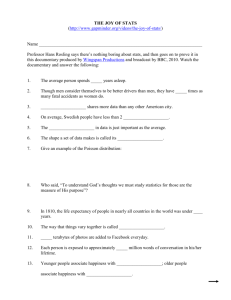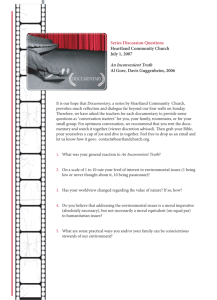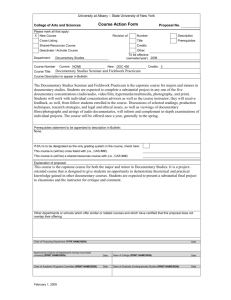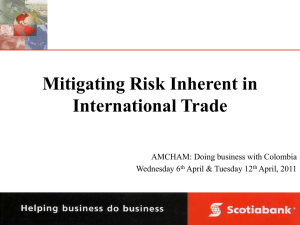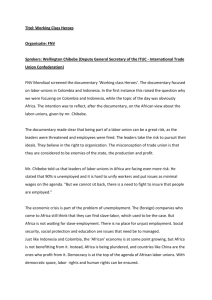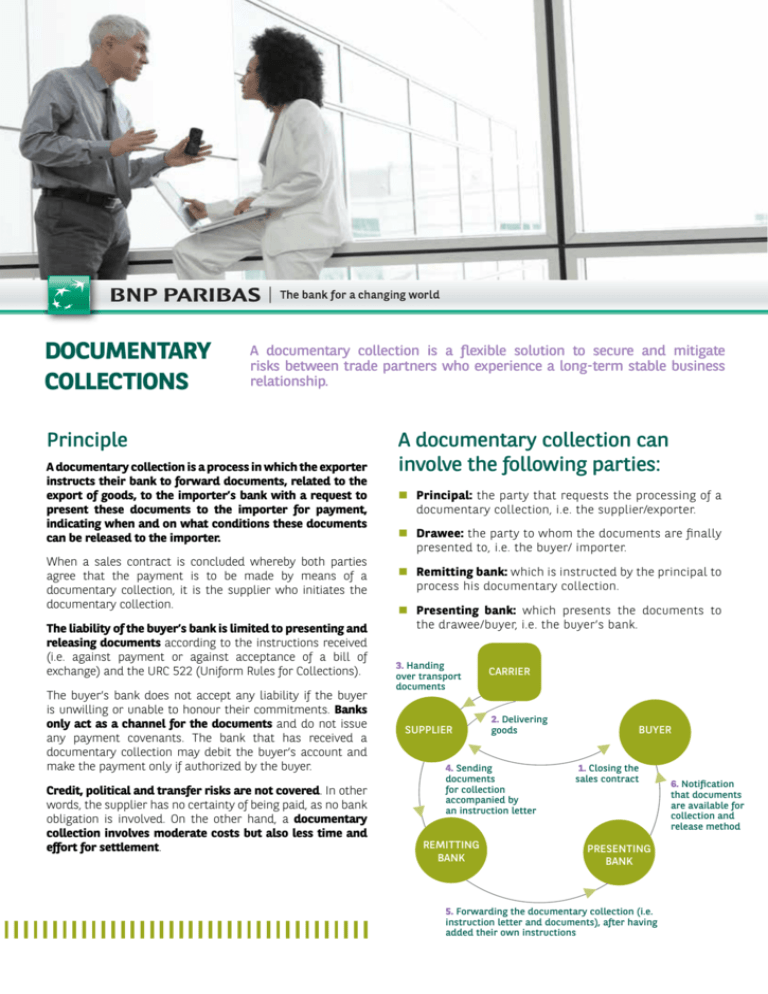
DOCUMENTARY
COLLECTIONS
A documentary collection is a flexible solution to secure and mitigate
risks between trade partners who experience a long-term stable business
relationship.
Principle
A documentary collection is a process in which the exporter
instructs their bank to forward documents, related to the
export of goods, to the importer’s bank with a request to
present these documents to the importer for payment,
indicating when and on what conditions these documents
can be released to the importer.
When a sales contract is concluded whereby both parties
agree that the payment is to be made by means of a
documentary collection, it is the supplier who initiates the
documentary collection.
The liability of the buyer’s bank is limited to presenting and
releasing documents according to the instructions received
(i.e. against payment or against acceptance of a bill of
exchange) and the URC 522 (Uniform Rules for Collections).
The buyer’s bank does not accept any liability if the buyer
is unwilling or unable to honour their commitments. Banks
only act as a channel for the documents and do not issue
any payment covenants. The bank that has received a
documentary collection may debit the buyer’s account and
make the payment only if authorized by the buyer.
Credit, political and transfer risks are not covered. In other
words, the supplier has no certainty of being paid, as no bank
obligation is involved. On the other hand, a documentary
collection involves moderate costs but also less time and
effort for settlement.
A documentary collection can
involve the following parties:
n Principal: the party that requests the processing of a
documentary collection, i.e. the supplier/exporter.
n Drawee: the party to whom the documents are finally
presented to, i.e. the buyer/ importer.
n Remitting bank: which is instructed by the principal to
process his documentary collection.
n Presenting bank: which presents the documents to
the drawee/buyer, i.e. the buyer’s bank.
3. Handing
over transport
documents
SUPPLIER
CARRIER
2. Delivering
goods
4. Sending
documents
for collection
accompanied by
an instruction letter
REMITTING
BANK
BUYER
1. Closing the
sales contract
PRESENTING
BANK
5. Forwarding the documentary collection (i.e.
instruction letter and documents), after having
added their own instructions
6. Notification
that documents
are available for
collection and
release method
Type of documentary collections
n Documents against payment = D/P
(also called Cash against Documents = C.a.D)
The presenting bank may only release the documents
against immediate payment.
8b. Handing
over transport
documents
CARRIER
SUPPLIER
8c. Delivering
goods
BUYER
7. Payment
10. Payment
8a. Handing
over all
documents
PRESENTING
BANK
REMITTING
BANK
n Documents against acceptance = D/A
The presenting bank may only release the documents
against acceptance of a draft by the importer, e.g. 180 days
after the goods shipping date.
CARRIER
8c. Delivering
goods
8b. Handing over
transport docments
BUYER
7. Accepting
bill of
exchange
13. Payment
REMITTING
BANK
9. Notice of
acceptance of
bill of exchange
12. Payment
n The importer:
A documentary collection is convenient for the importer as
it can be a way to avoid an advanced payment. Payment
for goods is made when shipping documents have been
received. Moreover, in case of documents released against
acceptance, the importer could have had the possibility to
previously negotiate a deferred payment with the exporter.
Key advantages
9. Payment
SUPPLIER
n The exporter:
A documentary collection is suitable if the exporter has
no doubt about the buyer’s ability to meet his payment
obligations and if the buyer`s country is politically and
economically stable with no foreign restrictions in the
exporter`s country.
It is understood that the buyer should not be able to take
possession of the delivery without having previously had
to accept the payment within the documentary collection
process. Indeed, there is no interest of using documentary
collection when the Incoterm is Ex Works or when the
goods are shipped by truck and delivered at the buyer’s
warehouse.
8a. Handing over
all documents
10. Presenting bill
of exchange for
payment on due date
PRESENTING
BANK
11. Paying bill
of exchange
n Universal means of payment:
Through an easy and recognised procedure, you benefit
from a means of payment subject to international uniform
rules (International Chamber of Commerce – Publication
522, otherwise called Uniform Rules for Collections 522).
Alongside this set of rules, which governs the rights
and obligations of the parties involved, local legislation
governing documentary collections also remains
important.
n A simple way to secure international transactions:
When sending the documents representing the transaction,
the exporter is certain that the bank would not release
them to the importer before specific conditions are
fulfilled. On the other hand, the importer is always free to
refuse the documents and then not take possession of the
goods without having to provide a justification.
n A dedicated e-platform Connexis Trade: to manage and
monitor all your import or export documentary collections
online.
Engaging your BNP Paribas local Trade Centre up-stream
of your transactions, will allow you to:
lstay informed and control your costs
lcheck the feasibility of your transaction
For further additional information, please contact:
Your BNP Paribas Trade Center
The information contained in this document is correct as at the date of printing. It is distributed for information purposes only, it does not constitute a prospectus and is not
and should not be construed as an offer document or an offer or solicitation to buy or sell any product or solution, to subscribe any service or to enter into any transaction
described in that document. This document does not and is not intended to constitute any investment or financial advice, and nothing contained herein shall be construed as
an inducement or recommendation of any form whatsoever. Recipient should contain independant legal, financial and other professional advice as regards its decision to buy or
sell any product or solution, to subscribe any service or to enter into any transaction described herein. BNP Paribas will not be responsible for the consequences of any use of or
reliance upon any information contained herein or for any omission or error. This document is distributed to selected recipients only. It may not be reproduced or disclosed (in
whole or in part) to any other person nor be quoted or referred to in any document without the prior written permission of BNP Paribas. © 2013 BNP Paribas. All rights reserved.

